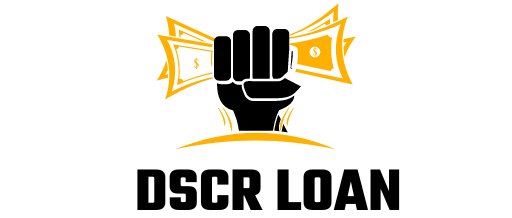Key Takeaways
- A Flex Loan is an open line of credit (like a personal line of credit) that lets you borrow up to a set limit and repay flexibly.
- Flex loans often target borrowers with irregular income or limited credit history, but they usually carry higher APRs than standard personal loans.
- You pay interest only on the amount you borrow; you can draw, repay, and redraw during the draw period.
- Common risks: high interest rates, fees, and the potential to accumulate revolving debt if you only make minimum payments.
- Compare flex loans with alternatives like personal loans, HELOCs, and credit cards before deciding.
Introduction
A Flex Loan can sound appealing: flexible access to cash without the hard push of a single lump-sum loan. But what exactly is it, who should consider one, and what traps should you avoid? In this guide we’ll explain how flex loans work, who they’re best for, fees and APR expectations, practical examples, and better alternatives so you can make an informed choice. The main keyword Flex Loan appears at the start because that’s how most users search when they want a quick, practical definition.
What Is a Flex Loan?
A flex loan is essentially a revolving line of credit that a lender extends up to an approved limit. You draw funds as needed, repay balances, and borrow again within that limit similar to how a credit card or personal line of credit works. Unlike a traditional fixed personal loan, a flex loan tends to have a draw period and often higher interest rates because many providers market these products to borrowers with limited credit options.
Quick facts:
- Unsecured in many cases (no collateral).
- Interest charged only on the outstanding balance.
- May include origination or maintenance fees.
How a Flex Loan Works Step by Step
Apply & get approved: Lender sets a credit limit based on credit, income, and underwriting criteria.
- Draw funds: Withdraw money up to your limit one time or multiple draws.
- Make payments: Pay interest (often monthly) and principal; many products allow extra payments without penalty.
- Redraw: As you repay, available credit returns and you can borrow again.
- End of term: Some flex loans convert to a repayment period where full balance must be repaid.
This structure offers flexibility for managing irregular income, short-term expenses, or rolling cash needs but comes with trade-offs (explained below).
Who Should Consider a Flex Loan?
A flex loan can be useful if you:
- Have irregular income (freelancers, contractors) and need short-term cash flow support.
- Need a safety line for emergency expenses without reapplying each time.
- Don’t qualify for lower-cost options like personal loans or HELOCs due to limited credit history.
However, if you can qualify for a low-rate personal loan or HELOC, those options will usually cost less over time.
Flex Loan Benefits
Flexible borrowing: Only draw what you need, when you need it.
- Interest-on-use: Interest accrues only on outstanding balances, not the full credit limit.
- Quick access: Many lenders fund fast helpful for urgent needs.
Risks & Downsides
- High APRs: Flex loans often carry higher APRs than fixed personal loans; some offers can reach very high rates for subprime borrowers.
- Fees: Origination, maintenance, and late fees can add up.
- Revolving debt risk: Easy access can lead to chronic borrowing and interest accumulation.
- Terms vary widely: Not all lenders are transparent; shop the fine print.
Typical Costs & APR Expectations
Rates depend on creditworthiness, lender, and product type. Industry reporting shows flex-loan APRs commonly fall in the high teens to mid-20s, and in riskier cases can be much higher. Always compare the APR, fees, and repayment terms before borrowing.
Real-World Example How a Flex Loan Helps
Scenario: Sam is a contract electrician with fluctuating monthly income. He secures a flex loan with a $10,000 limit to handle slow months and equipment repairs.
- Sam draws $3,000 for equipment repair.
- He pays interest-only during the next month while his income improves.
- As projects come in, he repays $2,500 and has $9,500 available again.
This flexibility prevents Sam from missing work or relying on payday loans, but he must manage payments to avoid interest piling up.
Alternatives to Flex Loans
Consider these before choosing a flex loan:
- Personal loan (fixed-term): Lower APRs for borrowers with good credit; predictable payments.
- Home Equity Line of Credit (HELOC): Lower rates if you have home equity, but uses your home as collateral.
- Credit cards: Useful for short-term needs, but can be costly and also risky if mismanaged.
- Local credit unions: May offer competitive personal lines with better member terms.
Use a cost vs. convenience checklist: how long you’ll hold the debt, the interest difference, and the total fees.
How to Choose the Right Flex Loan
Compare APRs and fees: APR gives the most complete borrowing cost picture.
- Read the repayment rules: Are extra payments allowed? Is there a balloon or maturity date?
- Check origination & maintenance fees: These can erase the benefit of low initial rates.
- Assess lender reputation: Look for transparent terms and clear customer service.
- Ask about credit checks & reporting: Some flex products target thin-file borrowers and may not run full credit checks (but might charge higher fees).
Practical Tips to Use a Flex Loan Wisely
Use only for short-term needs. Plan to repay quickly to minimize interest.
- Build a repayment schedule. Even if interest-only payments are allowed, set principal targets.
- Avoid repeated minimum payments. Minimum payments can extend debt and increase interest paid over time.
- Keep an emergency buffer. Use flex loans as a true last-resort buffer after savings, not as everyday credit.
- Document all draws and repayments for clear budgeting and tax purposes.
Conclusion
A Flex Loan provides useful flexibility for borrowers who need fast, repeatable access to cash without reapplying for credit each time. It’s especially valuable for people with irregular income or short-term funding needs. However, the convenience comes at a cost: higher APRs, potential fees, and a real risk of revolving debt if not managed carefully.
Before choosing a flex loan, compare costs (APR + fees), check alternatives like personal loans or HELOCs, and confirm the lender’s transparency around draws and repayment. If you decide a flex loan fits your needs, use it responsibly: borrow only what you need, repay principal quickly, and keep clear records. That way, the product’s flexibility becomes a financial tool not a trap.
FAQs
Is a Flex Loan the same as a personal line of credit?
They’re very similar: both are revolving lines of credit. Names differ by lender marketing and specific terms.
Can I get a flex loan with bad credit?
Some lenders market flex loans to borrowers with poor credit, but expect higher APRs and fees. Always compare alternatives.
How quickly can I get funds?
Many flex loan providers fund quickly sometimes the same day but funding time varies by lender and verification requirements.
Should I use a flex loan for debt consolidation?
Only if the flex loan APR is lower than your current rates and you have a clear repayment plan. Often, fixed-rate personal loans are better for consolidation.

Introducing Emily Parker, a seasoned professional with over 5 years of expertise in DSCR loans. With her extensive knowledge and experience in the field, Varsha has consistently demonstrated a deep understanding of DSCR loan intricacies and a proven track record of delivering successful outcomes for her clients.

